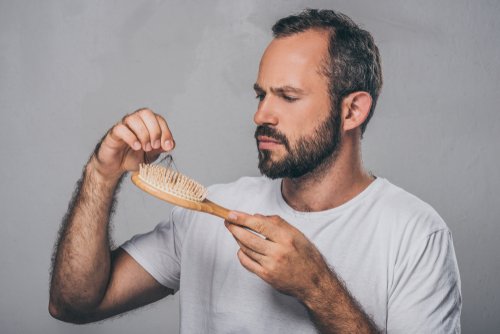Why Is My Hair Falling Out?
Hair loss is a common concern that 67% of men face at some point in their lives. Maybe you noticed it while swimming in the pool during our hot Texas summers here in Austin, perhaps you caught a glimpse of it in the mirror out on 4th street, or just maybe, someone like a friend or your barber told you about it while you were in the chair. While it can be a natural part of aging, several factors contribute to why men lose their hair. In this blog post, we will delve deeper into the basics of male hair loss, shedding light on the most common cause of male pattern hair loss.
Androgenic Alopecia
Androgenic alopecia is the most common form of hair loss affecting men in Austin, Texas. It’s the number one diagnosis that we see here at The Texas Hair Restoration Center. Commonly known as male pattern baldness, it is primarily caused by a combination of genetic and hormonal factors. This condition is inherited from both your mothers side of the family and your fathers side of the family despite what you’ve been told growing up. The characteristic pattern of androgenic alopecia often involves a receding hairline and thinning at the crown of the head. The progression of male pattern baldness can vary, with some individuals experiencing a gradual loss of hair over many years, while others may notice a more rapid onset. Some men can experience hair loss starting in their late teens while others may make it to their 40’s or 50’s by the time it starts. Typically, the noticeable thinning becomes evident once about 50% of the density in an area has been lost. Early intervention and understanding the signs of androgenic alopecia can be crucial in implementing effective strategies to manage and potentially slow down the progression of hair loss.
For now let’s take a closer look at what is causing your hair to fall out. In individuals with male pattern hair loss, hair follicles become sensitive to dihydrotestosterone (DHT), a hormone derived from testosterone. This hormone is created when testosterone passes through an enzyme called 5-alpha-reductase. Over time, exposure to DHT leads to the miniaturization of hair follicles, causing them to produce thinner, clear and shorter strands. The exact science behind how dihydrotestosterone (DHT) causes hair loss involves a complex interplay of genetic and hormonal factors. Individuals genetically predisposed to androgenic alopecia have hair follicles on the scalp possess receptors that are particularly sensitive to this DHT. This binding process triggers a series of events within the hair follicles, leading to their miniaturization. DHT induces a progressive shrinking of the follicles, shortening the anagen (growth) phase of the hair cycle and prolonging the telogen (resting) phase. Consequently, affected hair follicles produce clearer, finer and shorter hairs, leading to a reduction in hair density over time. Additionally, the miniaturized follicles may eventually cease to produce visible hair, resulting in the characteristic pattern of male pattern baldness.
The exact cause as to why this causes your hair to fall out is not exactly known. It is thought that the pattern that occurs is due to the higher levels of the enzyme 5-alpha-reductase in these areas which then produce more DHT locally and have a higher effect on the surrounding hairs. Fortunately the hairs on the sides and back of the head are less sensitive to DHT and are thought to have lower levels of 5-alpha-reductase.
However, what is known is that the more you know about hair loss and the sooner you act on your hair loss, the more likely you’ll be able to preserve what you have for a longer period of time. In the next blog we’ll cover the most effective treatments for androgenic alopecia and discuss some of the myths about each medication.
